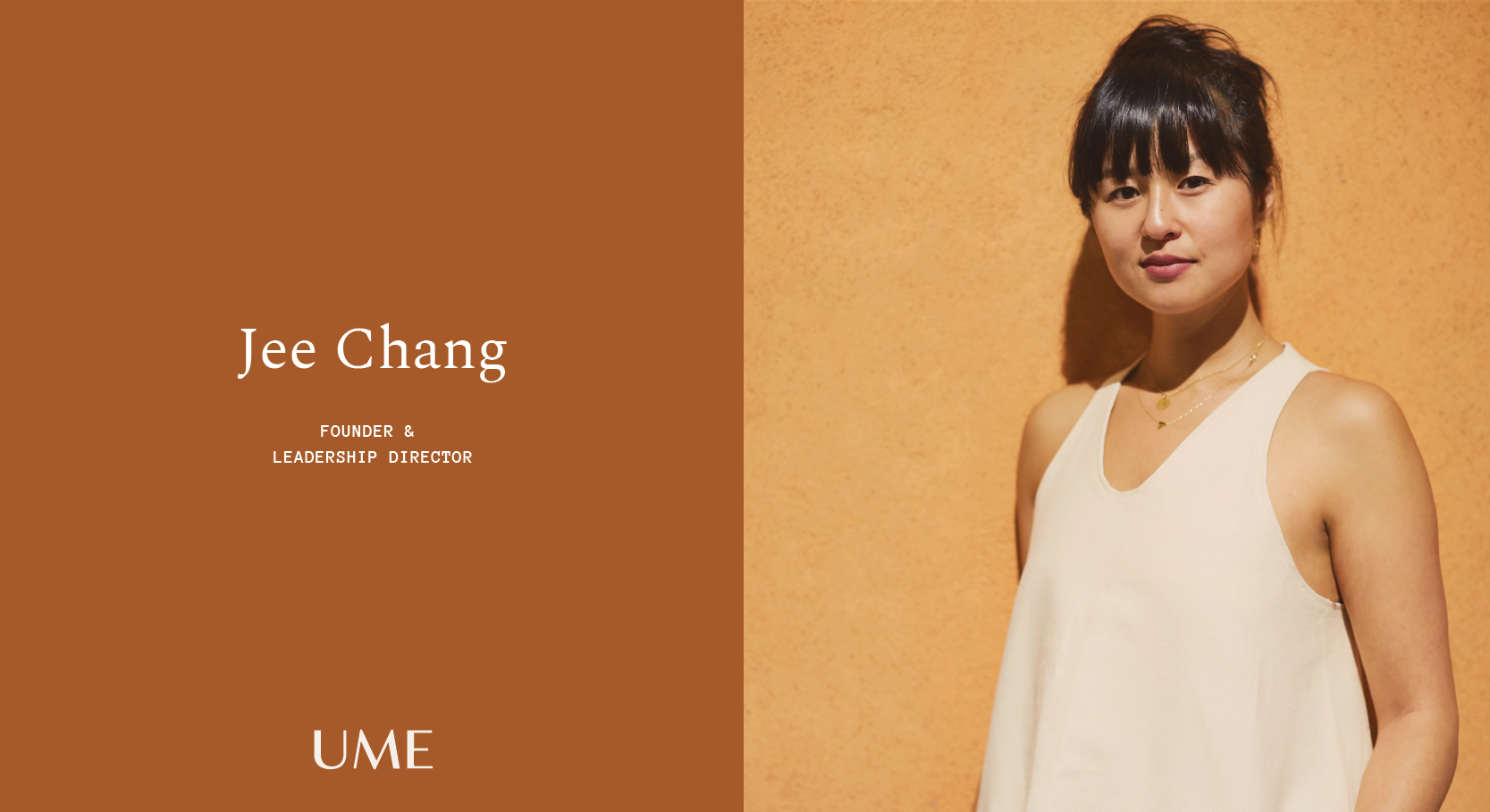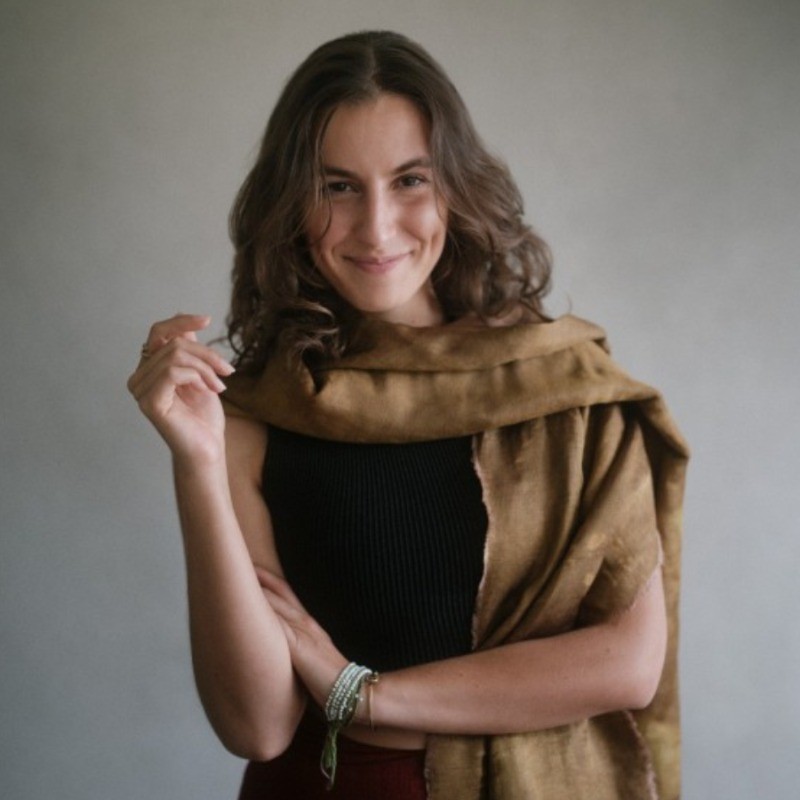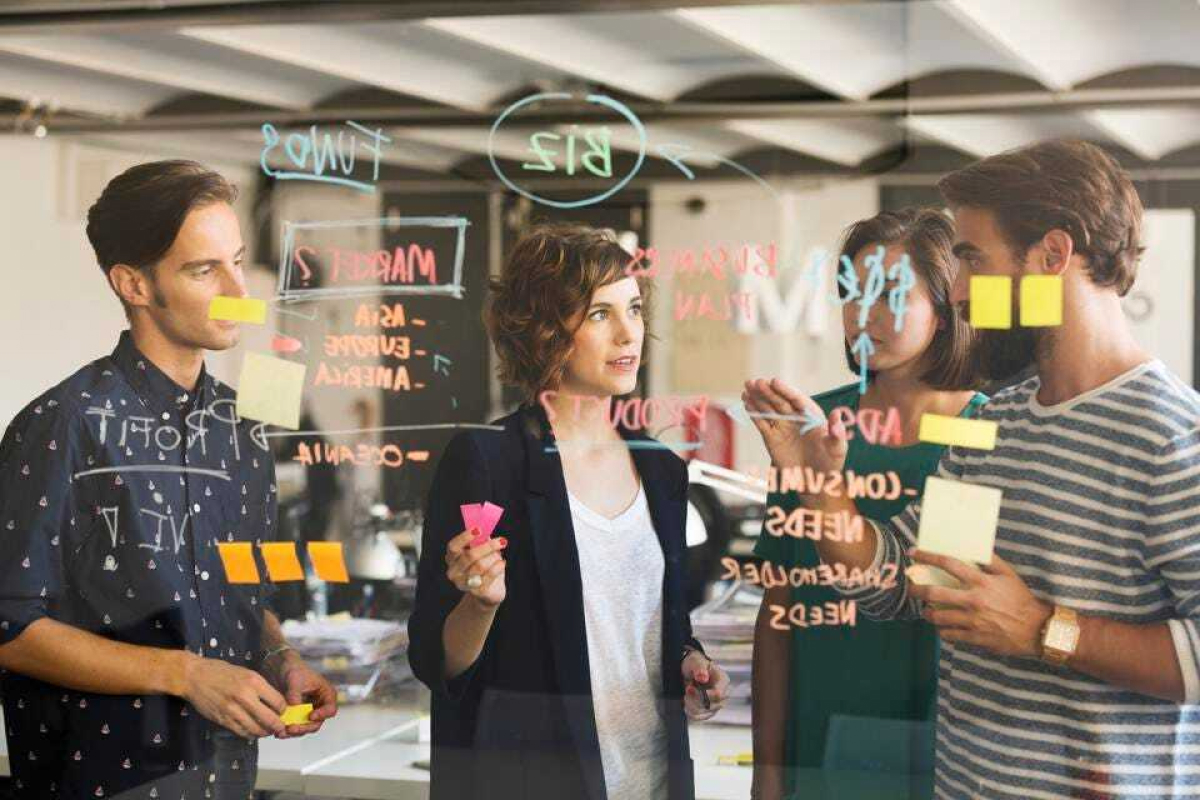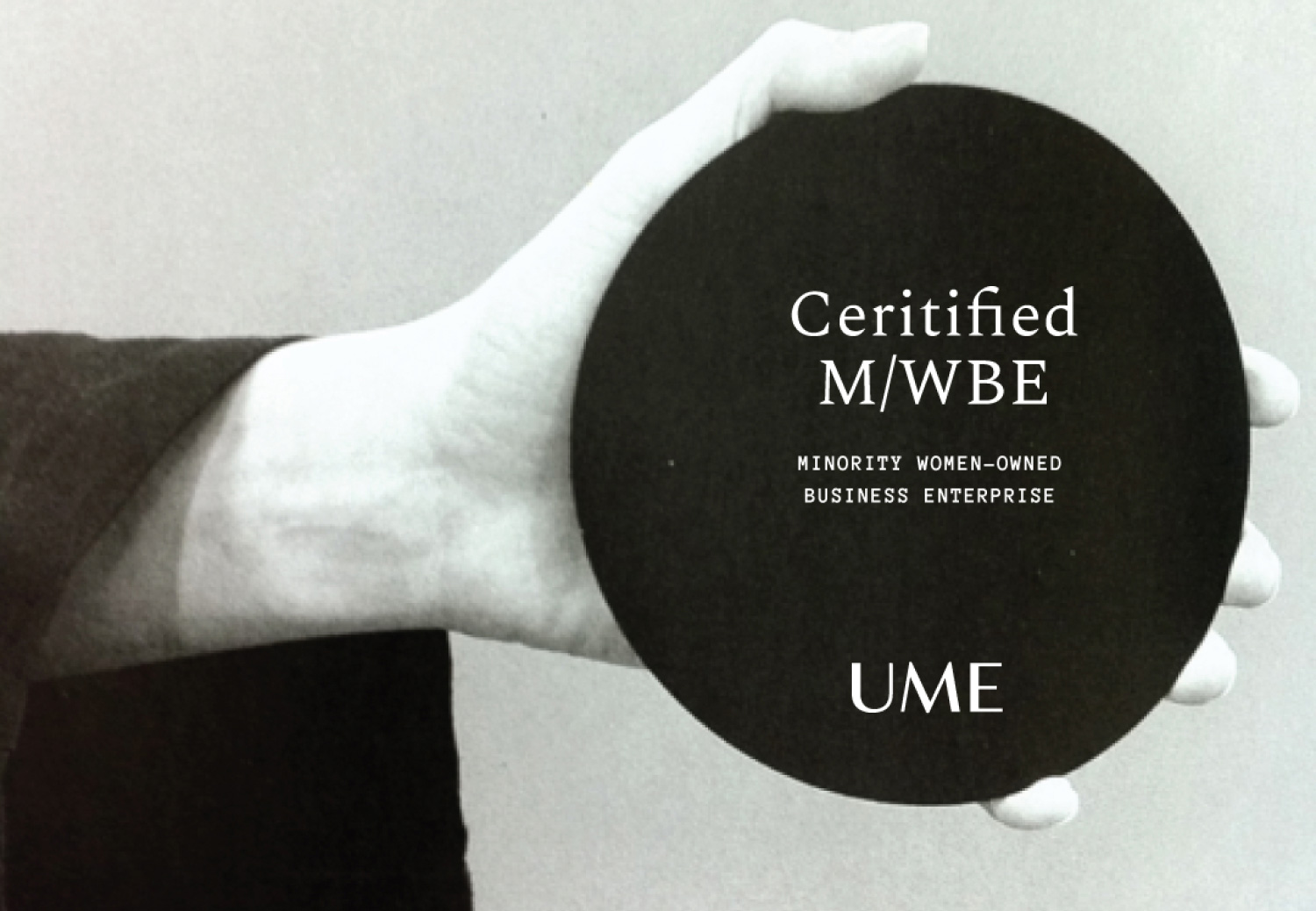On Leading a Committed Collective with Jee Chang
UME is a collaborative design studio growing brands from the inside-out. Our practice sits at the intersection of business, brand and leadership. We prioritize working with clients who align with our values and are building the new economy, using their business to make our systems more equitable and sustainable.
What makes us unique is that we are intentionally structured as a committed collective, stemming from the belief that creativity requires both freedom and agency, support and structure. We encourage our members to live inspired, balanced, oxygen-rich lives (side projects encouraged!) and to bring their whole selves to work. While each person has clear ownership over their project and rolls up their sleeves to deliver the work, we are highly collaborative and work in cross-functional teams.
We sat down with our inspiring founder and Leadership Director, Jee Chang, to speak more about how UME came to be and what she’s learning from running a studio that works as a committed collective.
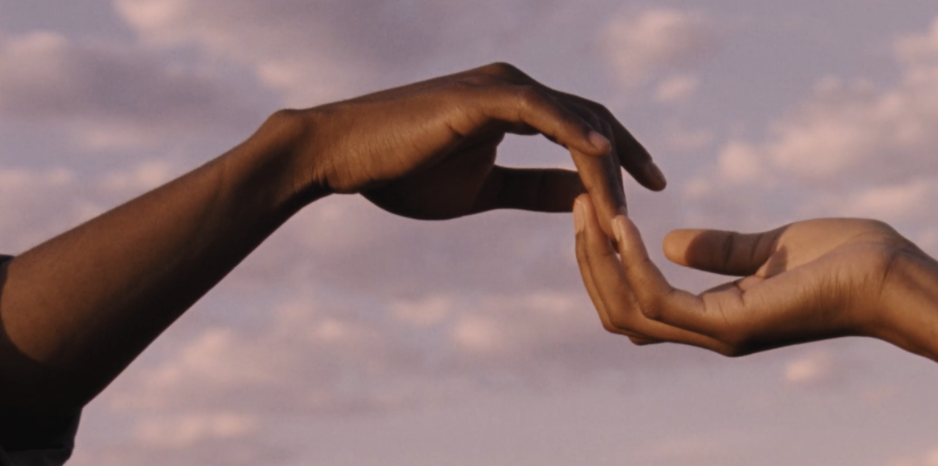
Why did you create UME? Why is it important to you?
After years of working at creative agencies I was curious to see if a different model was possible. One where an agency could have a positive impact, create quality work and still maintain an environment where people could bring their full selves. I was asking a lot of questions around what an intentional creative studio might look like and how we might design a regenerative culture around our practice.
Traditional agency models are based on owning people’s time, which often leads to creatives not having enough time to replenish or to explore their creativity elsewhere. It also means that they don't have a voice to participate in projects that they’re inspired by. This can be disheartening for those who are highly-driven and immerse themselves fully in the work that matters to them.
How we work really does impact what we create. Which is why the UME model is dedicated to creating an environment where people and ideas can thrive. Just like fire requires oxygen, creativity requires space, flexibility and freedom. This looks like creating opportunities for our collaborators to participate in the studio, choose the projects that excite them, AND also gives them more latitude to explore other experiences. What we have seen over and over again, is that by giving people this latitude, they actually show up more energized, creative and committed. This means that our client partners enjoy the benefits of a team that’s on fire. And our collaborators have the space they need for creativity to emerge in a way that is also aligned with what lights them up.
Furthermore, agency models are transactional, which serves a purpose when it comes to producing work, but is not necessarily conducive to a culture of innovation. Innovation requires us to respect each other's ability, trust that we are all willing to show up for each other, and believe collectively we can find a solution. It's an incredibly vulnerable place to be in. Not creating a safe space can lead to a defensive and competitive environment. It becomes about being right instead of having open conversations about possibility and truth— which also inhibits creative output.
How has UME evolved? What are you learning?
I was looking to create the kind of place where I wanted to work. I honestly didn’t know if it could be done, but what I am learning is that it actually works! Not only that, but I am surprised by how excited people are about the idea. It is proof that there is a real desire to evolve the ways in which we think about and do work.
UME as a studio didn’t start in its current form, and I believe it will continue to evolve. If it's an organization focused on its people, it needs to be flexible and adapt based on how we gather and work over time. This is continuously challenging me to learn and relearn how to listen to both my team and myself.
A good example of this is how our team went fully remote about four years ago, way before the pandemic. In the beginning, I had aspirations to have a brick and mortar studio in NYC. It was the fantasy so many creatives aspire to achieve. But I started to see how my team was looking to leave the city and expand their lives outside the hustle and bustle.
I had to make a choice. Stick with the old model, the old dream, or learn to adapt and believe that our working model can change and still be successful. At the time, being a remote team was a new concept. We lost new business opportunities because clients felt uncomfortable not being able to walk into an office.
Fast forward and look at where we are today. The pandemic was tough for so many companies, and yet for UME, we didn’t miss a beat. We had been working remotely for years and were able to support our clients during one of the most devastating times in history.
Why is this model significant? What kind of world is being created through it?
At this moment, it’s an interesting case study to follow. It shows that there is a possibility to reconsider the model of creative agencies, which has largely stayed the same. It is an expression of a different kind of leadership, which is more empathetic, less authoritative. What this model proves is the legitimacy and effectiveness of a committed collective which offers both freedom and structure. It is redefining what it means to be an independent or a freelancer through creating a new version of the concept of stability. One where stability can look different than a full time job, and feel more aligned with our intuition.
The impact that this model can have is really about dimensionalizing both humans and organizations, and more importantly, creating systems and structures that support their complex nature.
What impact does the UME model have on clients?
A sense of true partnership and accountability. We are not a vendor nor simply transactional in the way we operate. At UME we are about building trust with our client partners. We have a “we’re in this together” mentality. This means we're there to build the highs and share the lows. It also means we're willing to have the tough conversations to address how transformation works for brands and organizations. It is all about creating moments of possibility and win-win situations for both “you and me”— which is where the name UME comes from.
Furthermore, being a committed collective makes us agile. We craft teams of experts based not just on the unique needs of each client and project, but on the interests and expertise of each collective member. It’s critical for us that each collective member feels they have agency over every project.
Do you have any concerns, fears or worries about this model moving forward?
UME was created from a place of emergence. Listening to our gut, following a hypothesis and staying curious. I’m not following a tested model. This means that we are paving our own path, which requires that we continue to find comfort in ambiguity. We are fully invested, but not married to a particular outcome or evolution. All we know is that we are all multi-faceted individuals coming together and finding a way to be in service of each other.
As the founder, I’m always balancing building the business alongside protecting the creative process and collective culture. I’m tested everyday on how I embody our values from the types of clients we decide to work with, who becomes part of the collective, when to consider scaling, and how much we can invest in culture building. There are times I have to make hard decisions to protect our ethos even if it means foregoing new business. It’s a difficult line to hold, but one that I don’t compromise on and I’m grateful for a team that keeps me accountable.
